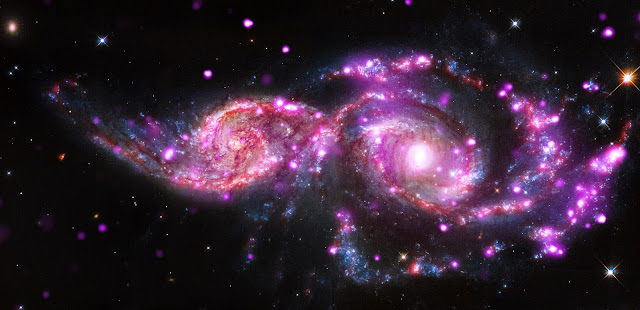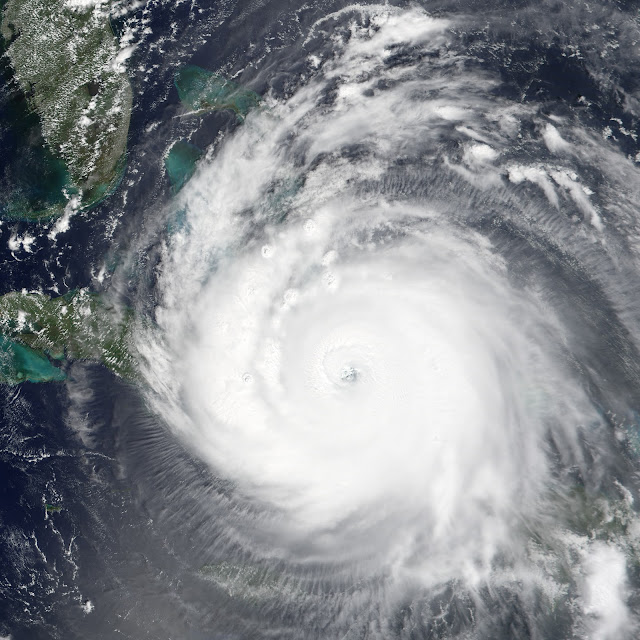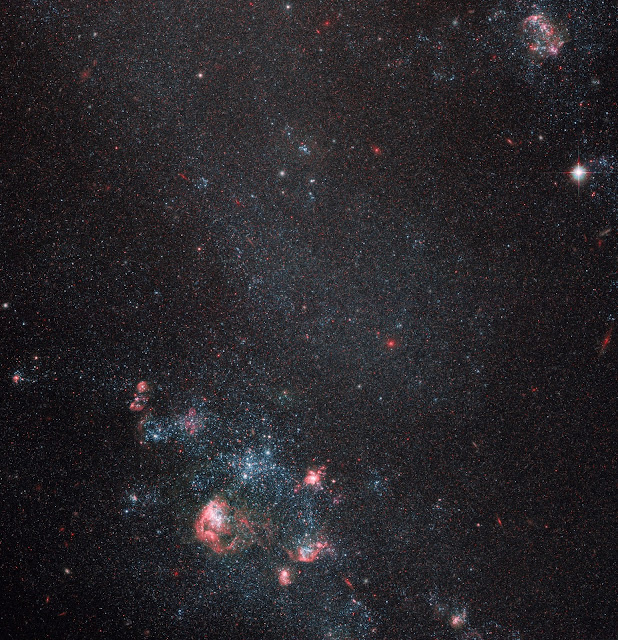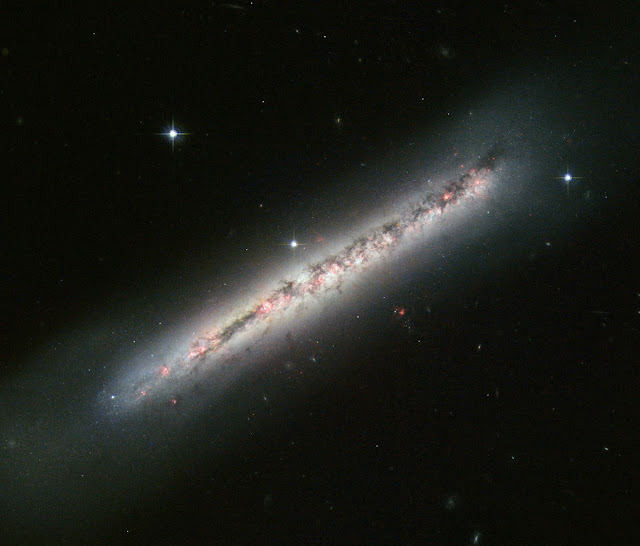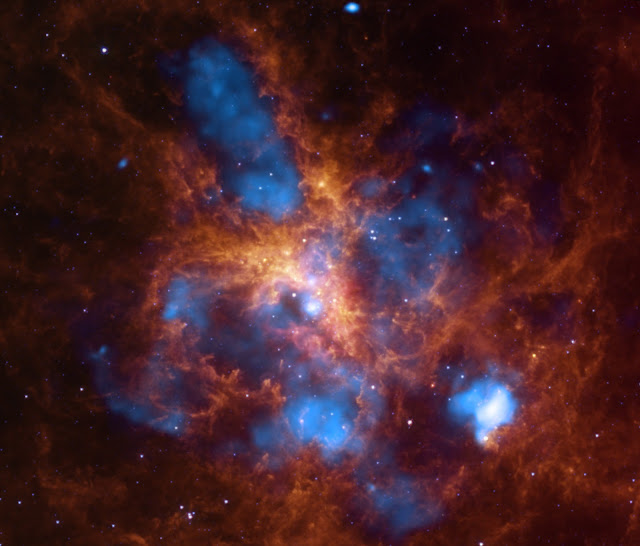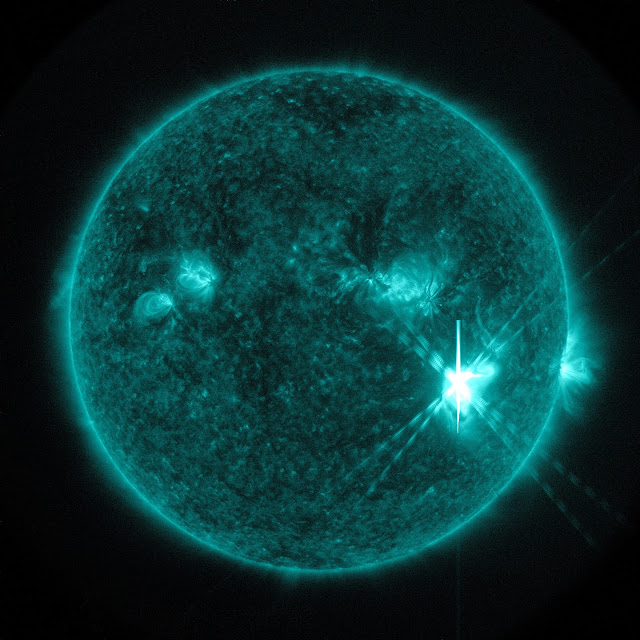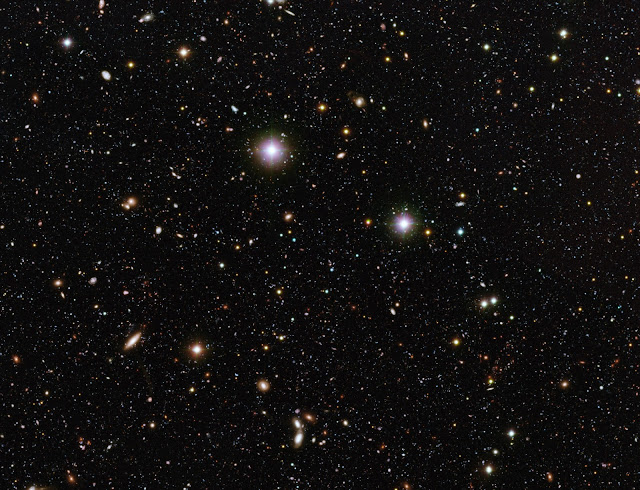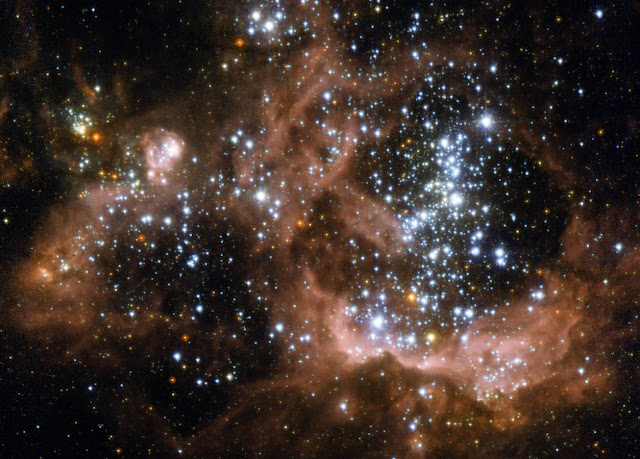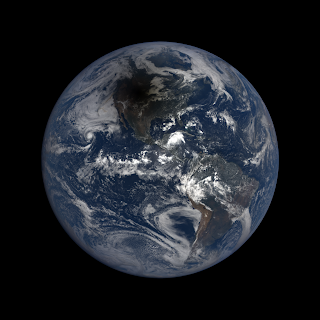Extremely intense radiation from newly born, ultra-bright stars has blown a glowing spherical bubble in the nebula N83B. A new NASA/ESA Hubble Space Telescope image has helped to decipher the complex interplay of gas and radiation in a star-forming region of a nearby galaxy. The image graphically illustrates just how these massive stars sculpt their environment by generating powerful winds that alter the shape of the parent gaseous nebula. These processes are also seen in our own Milky Way in regions like the Orion Nebula.
Extremely intense radiation from newly born, ultra-bright stars has blown a glowing spherical bubble in the nebula N83B. A new NASA/ESA Hubble Space Telescope image has helped to decipher the complex interplay of gas and radiation in a star-forming region of a nearby galaxy. The image graphically illustrates just how these massive stars sculpt their environment by generating powerful winds that alter the shape of the parent gaseous nebula. These processes are also seen in our own Milky Way in regions like the Orion Nebula.
The Hubble Space Telescope is famous for its contribution to our knowledge about star formation in very distant galaxies. Although most of the stars in the Universe were born several billions of years ago, when the Universe was young, star formation still continues today. This new Hubble image shows a very compact star-forming region in a small part of one of our neighbouring galaxies - the Large Magellanic Cloud. This galaxy lies only 165,000 light-years from our own Milky Way and can easily be seen from the Southern Hemisphere with the naked eye.
Young, massive, ultra-bright stars are seen here just as they are born and emerge from the shelter of their pre-natal molecular cloud. Catching these hefty stars at their birthplace is not as easy as it may seem. Their high mass means that the young stars evolve very rapidly and are hard to find at this critical stage. Furthermore, they spend a good fraction of their youth hidden from view, shrouded by large quantities of dust in a molecular cloud. The only chance is to observe them just as they start to emerge from their cocoon - and then often only with very high-resolution telescopes. Astronomers from France, the USA and Germany have used Hubble to study the fascinating interplay between gas, dust and radiation from the newly born stars in this nebula, known as N83B or NGC 1748. Its peculiar and turbulent structure has been revealed for the first time. This high-resolution study has also uncovered several individual stars that are responsible for lighting up this cloud of gas.
The apparently innocuous-looking star at the very centre of the nebula, just below the brightest region, is actually about 30 times more massive and almost 200,000 times brighter than our Sun. The intense light and powerful stellar 'winds' from this ultra-bright star have cleared away the surrounding gas to form a large cavity. The bubble is approximately 25 light-years in diameter - about the same size as the famous star-forming Orion Nebula. The Orion Nebula is sculpted by intense radiation from newly born stars in the same way as N83B. Astronomers estimate that the spherical void in N83B must have been carved out of the nebula very recently - in astronomical terms - maybe as little as 30,000 years ago.
The hottest star in N83B is 45 times more massive than the Sun and is embedded in the brightest region in the nebula. This bright region, situated just above the centre, is only about two light-years across. The region's small size and its intense glow are telltale signs of a very young, massive star. This star is the youngest newcomer to this part of the Large Magellanic Cloud. The Hubble image shows a bright arc structure just below the luminous star. This impressive ridge may have been created in the glowing gas by the hot star's powerful wind.
Measurements of the age of this star and neighbouring stars in the nebula show that they are younger than the nebula's central star. Their formation may have been 'triggered' by the violent wind from the central star. This 'chain-reaction' of stellar births seems to be common in the Universe. About 20 young and luminous stars have been identified in the region, but it may well be that many more massive stars remain undetected in other areas of the Large Magellanic Cloud, hidden by dust in small clusters like N83B.
To the right of the glowing N83B is a much larger diffuse nebula, known as DEM22d, which is partly obscured by an extended lane of dust and gas.
This image is composed of three narrow-band filter images obtained with Hubble's Wide Field Planetary Camera 2 in May 2000. The colours are red (ionised hydrogen, H-alpha), green (ionised oxygen) and blue (ionised hydrogen, H-beta). The blue corresponds to the warmest regions, the red to the coldest. The full image is 66 x 133 arc-seconds, which corresponds to 55 x 108 light-years at the distance of the Large Magellanic Cloud.
Image Credit: ESA, NASA & Mohammad Heydari-Malayeri (Observatoire de Paris, France)
Explanation from: http://spacetelescope.org/news/heic0104/

